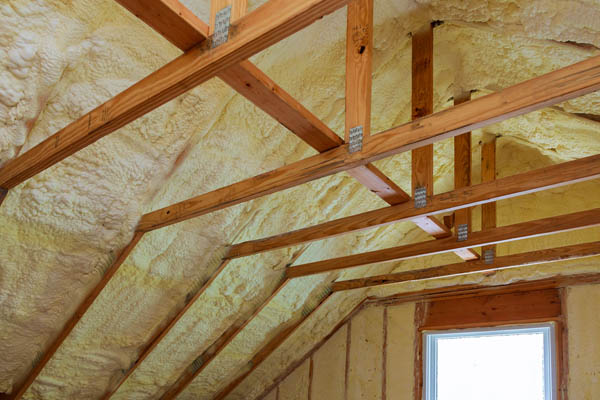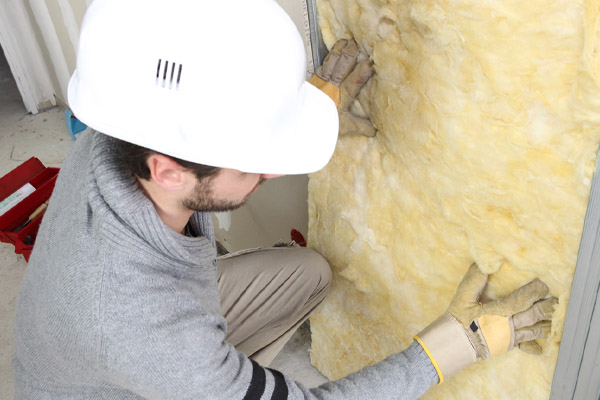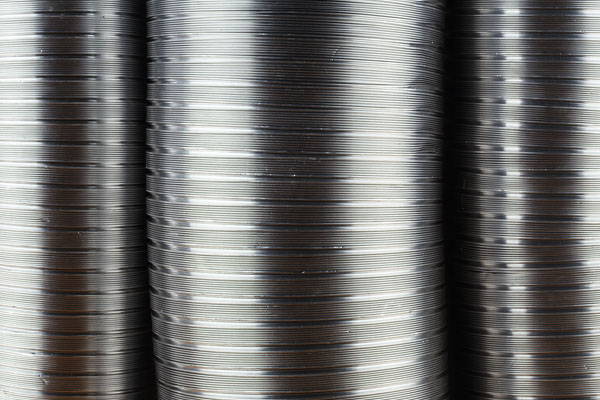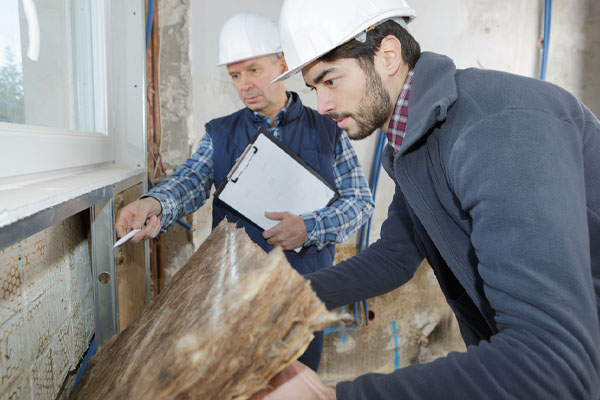The Unexpected Places You Should Be Insulating Your Colorado Home

Insulation enhances energy efficiency by minimizing heat transfer between indoor and outdoor spaces. It reduces energy consumption and costs. Understanding commonly insulated areas is vital for maximizing insulation benefits. Walls, roofs, and attics are primary areas insulated to prevent heat loss or gain. Proper insulation not only improves energy efficiency but also reduces environmental impact. This article discusses where to insulate your home.
Related Article: Clearing Up Fallacies About Spray Foam Insulation
The Importance of Home Insulation
Contents
- The Importance of Home Insulation
- Traditional Areas of Home Insulation
- Unexpected Areas that Require Insulation
- Insulation Around Windows & Doors
- Insulating Electrical Outlets & Light Switches
- Importance of Insulating Plumbing Systems
- Tips for Insulating Your Home
- The Impact of Insulating Unexpected Areas
- Where To Insulate Your Home In Fort Collins, CO

Home insulation plays a crucial role in maintaining a comfortable indoor temperature. It prevents heat loss during winters and heat gain during summers. This significantly benefits energy costs as insulation helps reduce energy consumption and lowers utility bills.
By decreasing the reliance on HVAC systems, insulation reduces greenhouse gas emissions. It contributes to a more sustainable and eco-friendly living environment. The proper insulation and maintenance of home insulation have favorable long-term effects on energy efficiency, financial savings, and environmental impact.
Related Article: Injection Foam Insulation vs. Spray Foam Insulation: What’s the Difference?
Traditional Areas of Home Insulation
There are three traditional areas of home insulation: the attic, walls, and basements.
- Attics: Attics are prone to significant heat loss and heat gain. Attic insulation helps maintain a consistent temperature throughout the house.
- Walls: Wall insulation prevents heat transfer between the interior and exterior walls, reducing energy consumption.
- Basement: Insulating basement walls is beneficial for maintaining a comfortable temperature and preventing moisture buildup, which can lead to mold growth.
Related Article: Does Spray Foam Damage Roof Shingles?
Unexpected Areas that Require Insulation

Insulation is not limited to traditional areas like attics, walls, and basements. There are unexpected areas in a home that also benefit from insulation. Some of the areas where to insulate your home include:
Related Article: What Are The Pros And Cons Of Spray Foam Insulation?
Floors & Ceilings
Floor and ceiling insulation offers several benefits for homeowners.
- Floor Insulation: It enhances energy efficiency by reducing heat loss through the floor. Insulating floors above unheated spaces, such as crawlspaces or garages, prevents the escape of valuable warmth. It also enhances comfort by minimizing cold floors during winter months. It makes the living space more pleasant and cozy. Floor insulation also aids in noise reduction by dampening sound transmission between different levels of the House. It creates a quieter and more peaceful environment. Floor insulation acts as a barrier against moisture and condensation, protecting the flooring materials from potential damage. It increases the durability of the flooring by shielding it from extreme temperature changes, reducing the risk of warping or damage over time.
- Ceiling Insulation: It plays a vital role in temperature regulation within a home. It helps prevent heat loss during colder months, improving energy efficiency and reducing heating costs. The insulation prevents the warmth generated inside the house from escaping through the uppermost part of the building. It also reduces heat gain during hot summer months. It protects against heat transfer from the roof to the living space. Ceiling insulation helps maintain a more stable indoor temperature throughout the year. It also helps control condensation, which prevents moisture buildup and minimizes the risk of mold growth or structural damage. The energy savings achieved through ceiling insulation can lead to long-term cost savings and reduced environmental impact.
Ductwork

Energy loss through uninsulated ducts can be significant. It allows cooled or heated air to escape into unconditioned spaces, such as attics or basements, instead of reaching the intended areas.
Proper ductwork insulation techniques can help mitigate energy loss. Using materials like fiberglass or foam insulation reduces heat transfer effectively. Sealing joints and connection with foil tape or mastic further enhances efficiency. Hire an expert HVAC technician for the ductwork insulation job.
Related Article: How Is R Value Calculated?
Garage Walls & Doors
Insulating garage walls is essential for several reasons:
- It regulates the temperature within the garage, preventing extreme heat or cold from seeping into adjacent living spaces. It acts as a barrier against outdoor temperature fluctuations. It creates a more comfortable environment and reduces the workload of HVAC systems.
- It enhances energy efficiency by minimizing heat loss or heat gain.
- It helps control moisture and condensation in the garage. This helps prevent potential damage to stored items and lowers the risk of mold or mildew growth.
Insulating garage doors also offers numerous benefits.
- It reduces heat transfer which allows for better temperature regulation within the garage. This is especially important if the garage is used as a workspace, storage area, or entryway into the house.
- It prevents air leakage. The insulation reduces the amount of air-conditioned air escaping from the garage.
- It minimizes noise transmission. It provides a quieter environment inside the garage and reduces disturbances to the surrounding areas.
Insulation Around Windows & Doors
Energy loss through gaps and cracks in windows and doors is common. Gaps and cracks allow air leakage, resulting in heat loss or heat gain. The escaping air requires HVAC systems to work extra hard, which can lead to increased energy consumption and high electricity bills.
There are various insulation options available to address this issue.
- Weatherstripping: An effective method that involves applying strips of material around the edges to seal gaps and prevent air infiltration.
- Caulking: Seals small cracks and gaps around window and door frames.
- Window Film: Window or low-emissivity films can improve insulation by reducing heat transfer.
Related Article: How Better Attic Insulation Improves Indoor Air Quality In Colorado
Insulating Electrical Outlets & Light Switches
Electrical outlets and light switches can contribute to heat loss in homes due to their proximity to exterior walls. The gaps around these fixtures allow air infiltration, resulting in drafts and heat transfer between the inside and outside of the building.
Insulating electrical outlets and light switches is best performed by professionals for safety and compliance with electrical codes. Here are some insulating techniques for these building fixtures:
- Install foam gaskets behind the outlet or switch plate to create a seal and minimize air leakage.
- Use electrical box insulation inserts to fit inside the outlet or switch box and provide additional insulation.
Importance of Insulating Plumbing Systems
Insulating hot water pipes helps maintain water temperature, reducing the need for constant reheating. Insulated pipes ensure hot water reaches its destination without a significant drop in temperature.
Protecting pipes from freezing prevent pipe burst and water damage. Insulating pipes in unheated areas such as crawlspaces, basements, or exterior walls helps maintain a consistent temperature and prevents pipes from freezing. Insulation acts as a barrier that protects pipes from freezing temperatures. It also provides thermal resistance, reducing the risk of condensation and potential moisture-related issues.
Related Article: Do I Need to Remove Old Insulation Before Installing New Spray Foam in Colorado?
Tips for Insulating Your Home

Hire a Professional Insulation Contractor
Hire a professional HVAC technician for home insulation. Professionals have the expertise and experience to assess your specific insulation needs. They can also recommend the most suitable solutions. HVAC technicians can accurately calculate the required insulation R-values, identify potential problem areas, and ensure proper installation. They have access to high-quality materials and equipment for long-lasting and adequate insulation. Their expertise minimizes the risk of errors. They can help avoid inadequate insulation, ultimately leading to optimal energy efficiency and cost savings.
Related Article: Why Is Insulation Important In Fort Collins, CO Homes?
Safety First
Always wear adequate personal protective equipment (PPE), such as gloves, goggles, and dust masks, to protect against potential irritants or harmful particles. Always follow manufacturer instructions and guidelines for installation. Be cautious of electrical wiring and ensure proper insulation clearance to prevent fire hazards. Have adequate ventilation and use secure footing or safety equipment. Most importantly, consult or hire a professional for a safe and effective insulation project.
Different Types of Insulation
Different types of insulation serve different purposes in a home. Make sure that you choose the right one for your space. Common options include:
- Fiberglass: A versatile choice, effective for walls, attics, and floors.
- Spray Foam: Provides high-quality air sealing and insulation properties, ideal for sealing gaps and hard-to-reach areas.
- Cellulose Insulation: Made from recycled materials with good thermal performance and soundproofing capabilities.
- Reflective Insulation: Suitable for reducing heat gain in attics.
Related Article: Do-It-Yourself Insulation Problems: 6 Things That Lead To DIY Nightmares
The Impact of Insulating Unexpected Areas

Insulating unexpected areas in a home can significantly impact overall energy efficiency, cost savings, and comfort levels. Insulating these areas minimizes heat loss and air leakage, reducing energy consumption and lowering electricity bills. Insulation helps maintain desired temperatures, reducing the workload on HVAC systems. Over time, the cumulative effect of insulation in these unexpected areas leads to increased energy efficiency, long-term cost savings, and improved overall quality of living in the home.
Conclusion
In addition to traditional areas, unexpected places in a home that benefit from insulation include floors, pipes, ducts, electrical outlets, and garage walls. Insulating these areas helps prevent heat loss, reduce energy consumption, control moisture, enhance comfort, and improve overall energy efficiency. Investing in comprehensive home insulation is a wise move to enhance both the environmental and financial aspects of homeownership, ensuring long-term savings and sustainable living space.
Related Article: Top 7 Spray Foam Installation Problems In Colorado
Where To Insulate Your Home In Fort Collins, CO
If you are considering air sealing or upgrading your home’s insulation, it is best to seek professional guidance. However, not all professionals offer the same level of quality and pricing. Always make sure you work with the best professionals available in your area. Fortunately, residents of Fort Collins and nearby areas can turn to Ascend Construction for top-notch service.
At Ascend Construction, we specialize in insulation removal and installation, air sealing, energy conservation, energy audits, whole-house fan installations, and more. We’re confident that our service stands out from the rest.

For a free consultation with our experts, get in touch with Ascend Construction today. Our team can offer practical solutions to address any problem areas in your Fort Collins home. We guarantee affordable pricing and high-quality work. Click here to contact us, or call us using the button below. We offer free, no-obligation, in-home consultations.
Ascend Construction
4115 County Road 19
Fort Collins, CO, 80524
(970) 420-5495